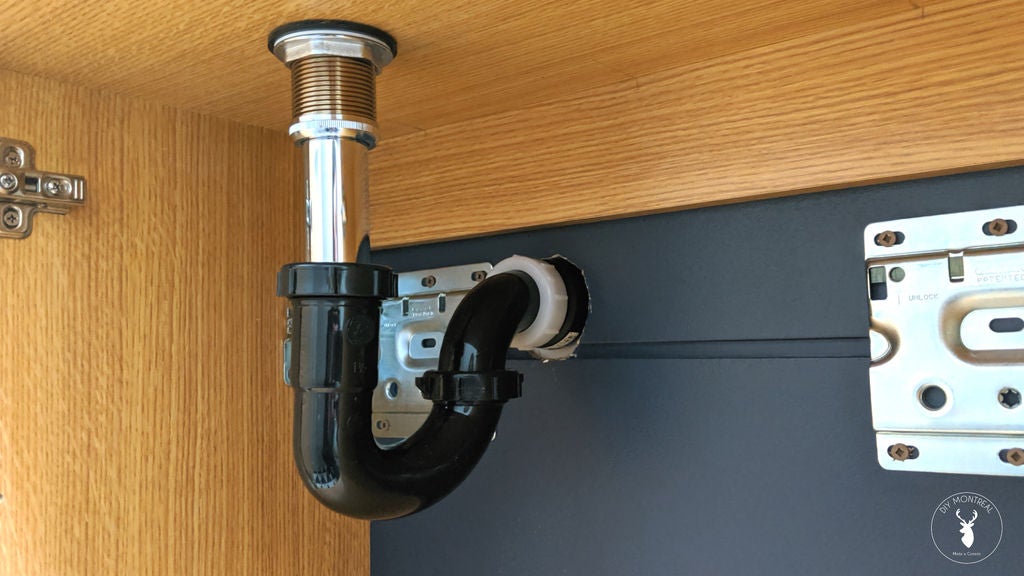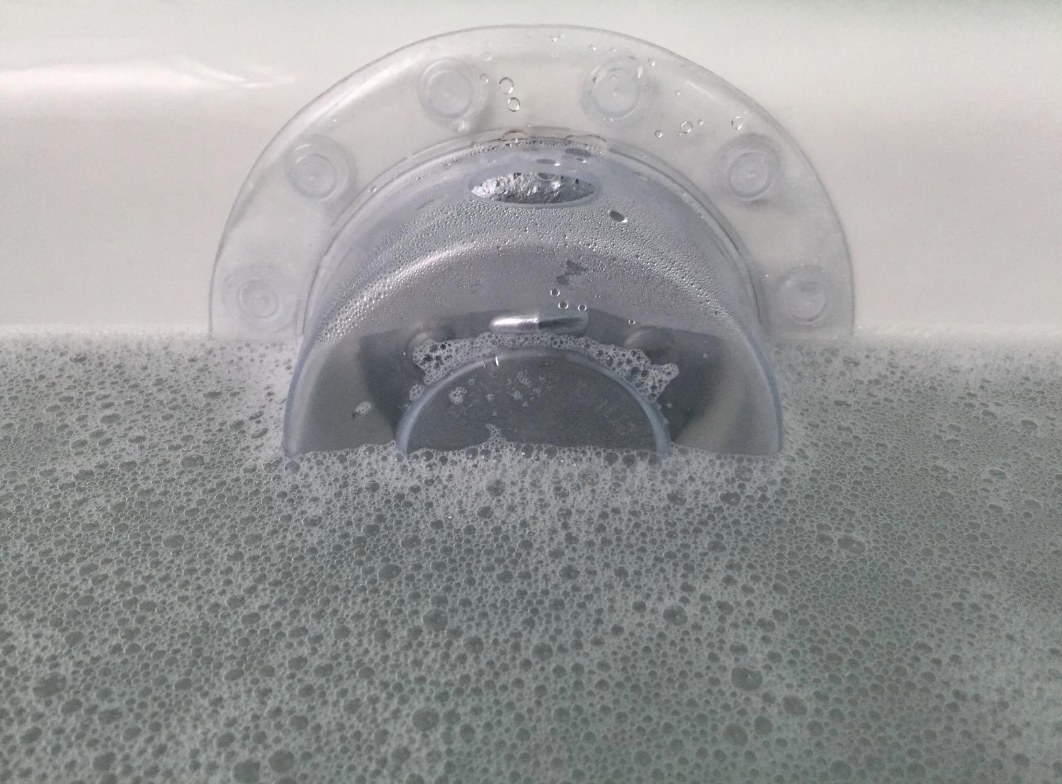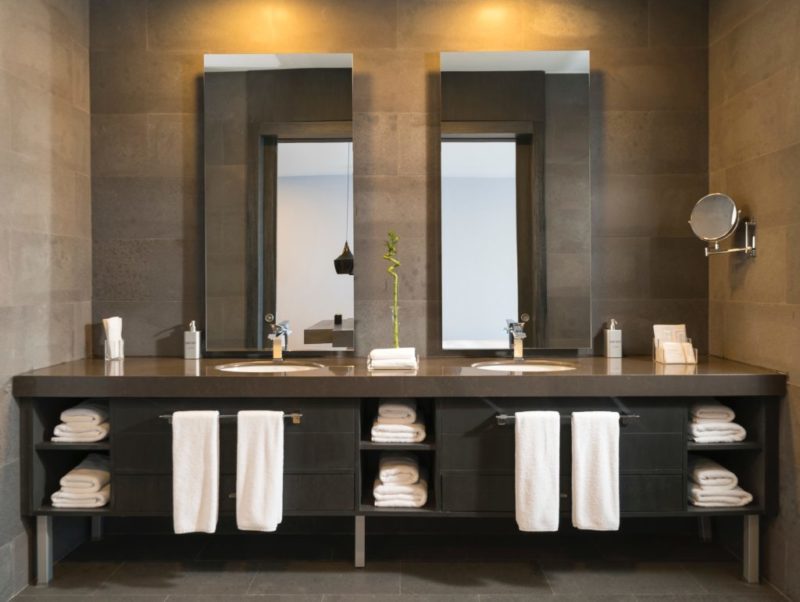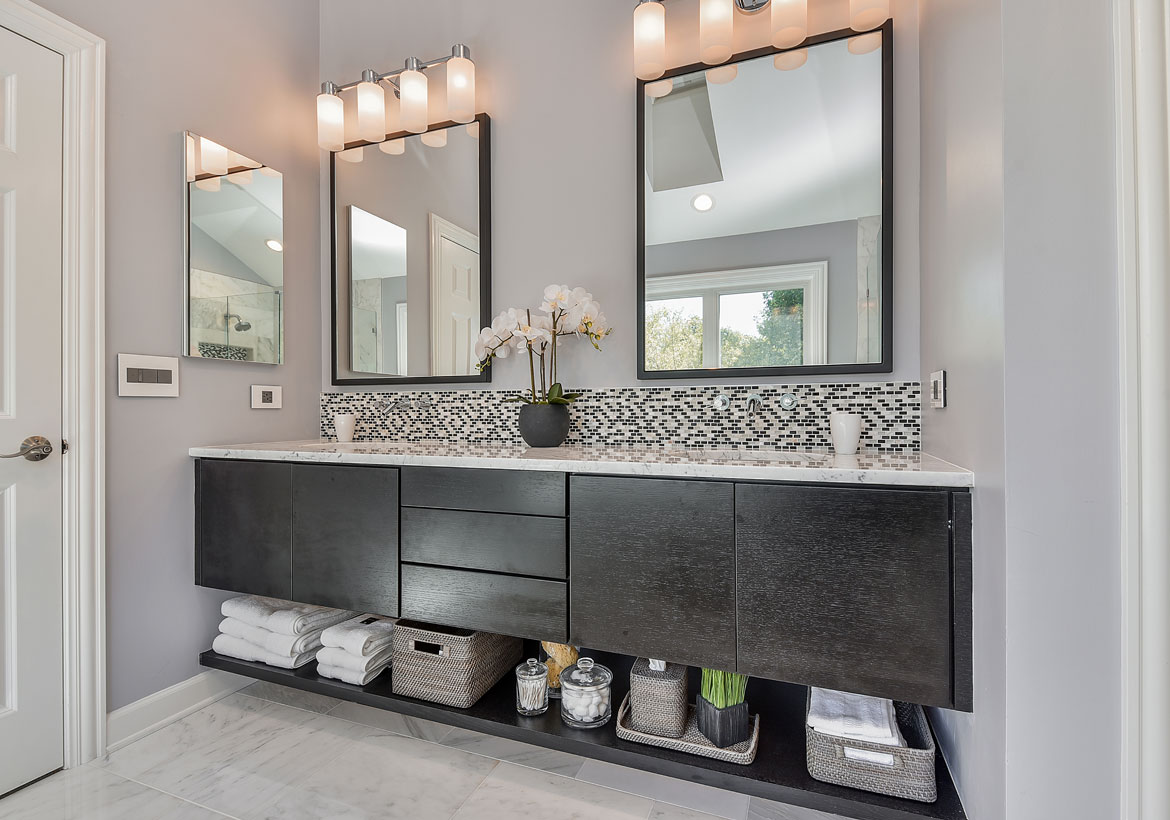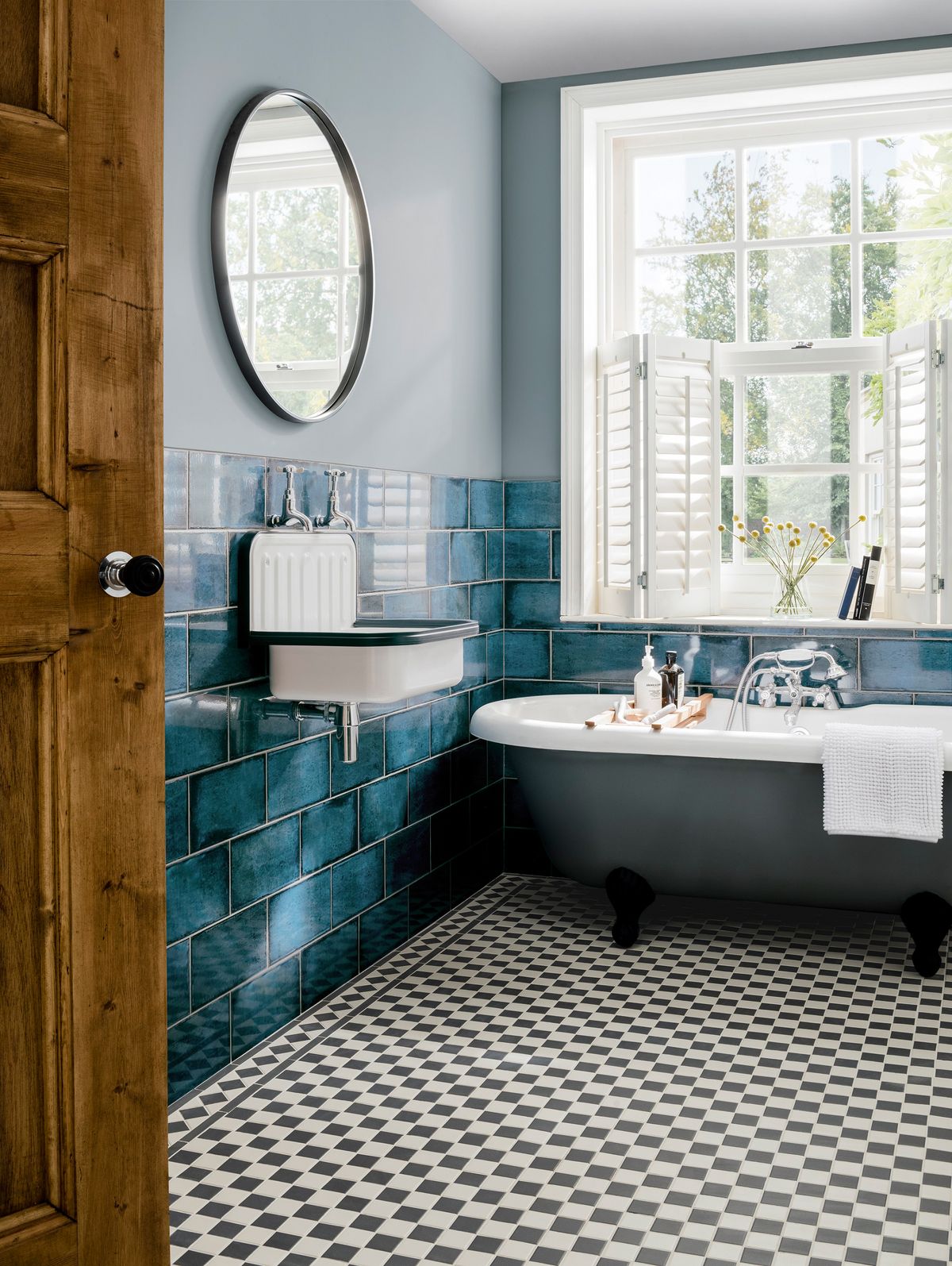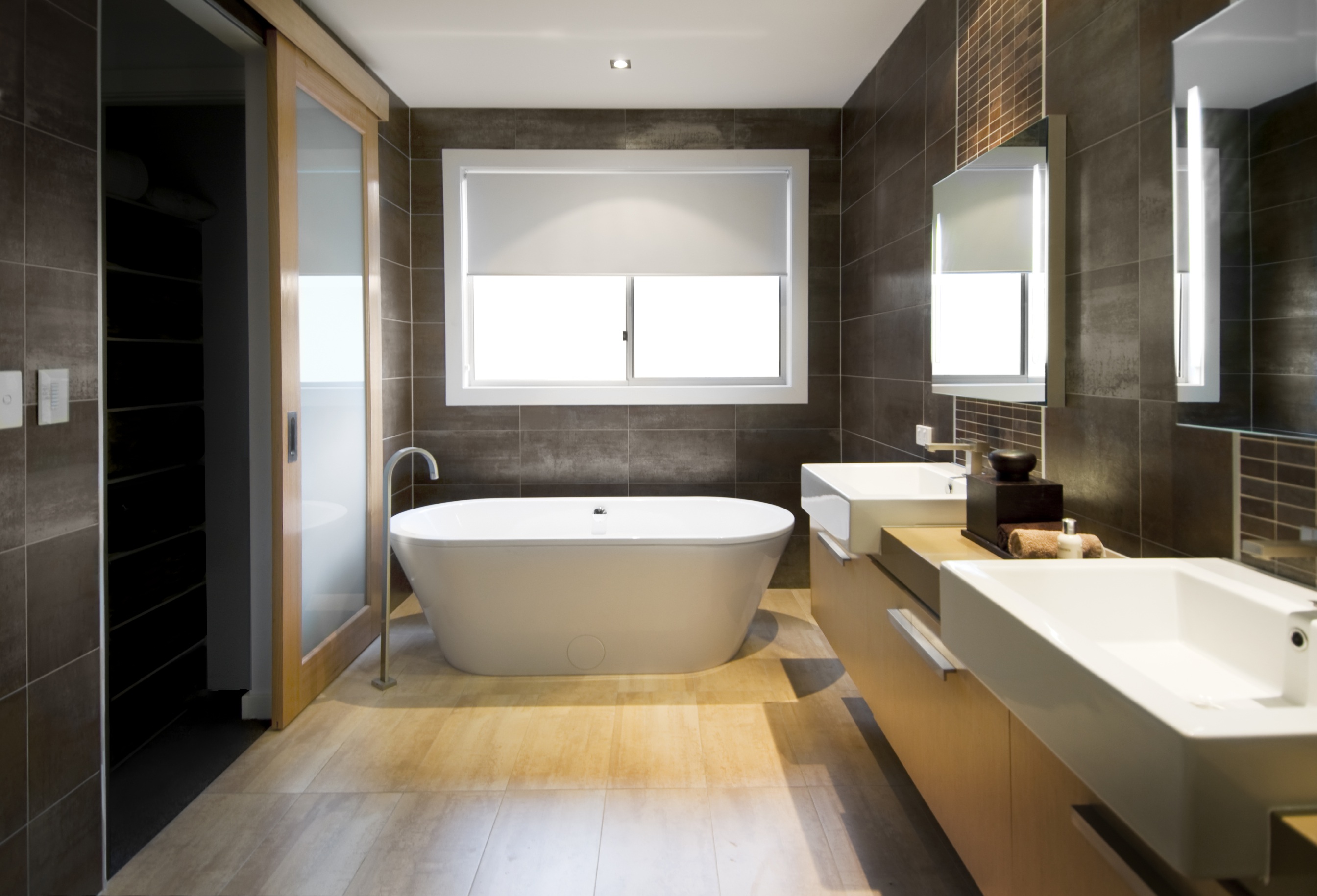When it comes to designing and renovating a bathroom, the bathroom vanity overflow drain may not be the first thing that comes to mind. However, this small but essential component plays a crucial role in ensuring proper drainage and preventing water damage in your bathroom. What is a Bathroom Vanity Overflow Drain and Why is it Important?
The bathroom vanity drain is a plumbing fixture that connects the sink to the main drainage system. It consists of a sink stopper, tailpiece, P-trap, and drain pipe. The stopper controls the flow of water, while the P-trap traps debris and prevents sewer gases from entering your home. The vanity overflow drain is a small hole located just below the sink's rim, and it helps to prevent the sink from overflowing by directing excess water into the drainage system. Understanding the Bathroom Vanity Drain System
Having a functional vanity overflow drain is crucial for maintaining the cleanliness and functionality of your bathroom. Without it, any excess water in your sink could overflow and cause water damage to your countertop and cabinets. This can lead to costly repairs and even mold growth if left untreated. Importance of a Functional Vanity Overflow Drain
There are several types of bathroom vanity overflow drains available in the market, including traditional overflow drains, pop-up drains, and grid drains. Traditional overflow drains have a small hole on the side of the sink, while pop-up drains have a lever that opens and closes the stopper. Grid drains have a flat cover over the drain, allowing water to flow freely while preventing debris from clogging the drain. Types of Bathroom Vanity Overflow Drains
When choosing a vanity overflow drain, there are a few factors to keep in mind. Firstly, consider the material of the drain. Plastic drains are the most affordable but may not be as durable as metal ones. Secondly, consider the size and shape of the drain to ensure it fits your sink properly. Lastly, think about the overall design and style of your bathroom to choose a drain that complements the aesthetic. Factors to Consider When Choosing a Vanity Overflow Drain
To keep your bathroom vanity overflow drain functioning properly, it's essential to perform regular maintenance. This includes removing any debris or hair that may have accumulated in the drain, as well as cleaning the drain cover and stopper. You can also use a mixture of baking soda and vinegar to help unclog any buildup in the drain. Tips for Maintaining Your Bathroom Vanity Overflow Drain
One of the most common issues with bathroom vanity overflow drains is clogging. This can be caused by hair, soap scum, or other debris getting stuck in the drain. Another issue is a leaky drain, which can be caused by a faulty stopper or loose connections. If you notice any issues with your drain, it's best to address them promptly to prevent further damage. Common Issues with Bathroom Vanity Overflow Drains
While some may attempt to install a bathroom vanity overflow drain themselves, it's always best to hire a professional plumber for the job. They have the expertise and tools necessary to ensure proper installation, preventing any potential issues down the line. Plus, they can also provide valuable advice on choosing the right drain for your specific bathroom needs. The Importance of Professional Installation
The bathroom vanity overflow drain may seem like a small and insignificant component, but it plays a significant role in the functionality and maintenance of your bathroom. By understanding its purpose and choosing the right drain for your needs, you can ensure a clean and well-functioning bathroom for years to come. In Conclusion
The Importance of a Bathroom Vanity Overflow Drain in House Design

Ensuring Proper Drainage in Your Bathroom Vanity
 When it comes to designing a bathroom, there are many elements to consider – from the layout and fixtures to the color scheme and overall aesthetic. However, one crucial component that often gets overlooked is the
bathroom vanity overflow drain
. This small yet essential feature plays a significant role in maintaining proper drainage and preventing water damage in your bathroom.
When it comes to designing a bathroom, there are many elements to consider – from the layout and fixtures to the color scheme and overall aesthetic. However, one crucial component that often gets overlooked is the
bathroom vanity overflow drain
. This small yet essential feature plays a significant role in maintaining proper drainage and preventing water damage in your bathroom.
What is a Bathroom Vanity Overflow Drain?
 A
bathroom vanity overflow drain
is an additional drainage system built into the sink, usually located near the top of the basin. Its purpose is to prevent water from overflowing and pooling on the countertop, especially when the sink is being used. This feature is particularly useful for households with multiple occupants who may not be as mindful of the water level in the sink.
A
bathroom vanity overflow drain
is an additional drainage system built into the sink, usually located near the top of the basin. Its purpose is to prevent water from overflowing and pooling on the countertop, especially when the sink is being used. This feature is particularly useful for households with multiple occupants who may not be as mindful of the water level in the sink.
The Benefits of a Bathroom Vanity Overflow Drain
Choosing the Right Bathroom Vanity with an Overflow Drain
 When shopping for a new bathroom vanity, it is crucial to consider one with an overflow drain. Not all vanities come equipped with this feature, so be sure to check before making a purchase. Look for a sink with an overflow hole, which is typically located at the front of the basin, near the top. You can also opt for a vanity with a built-in overflow drain, which is a more convenient and visually appealing option.
When shopping for a new bathroom vanity, it is crucial to consider one with an overflow drain. Not all vanities come equipped with this feature, so be sure to check before making a purchase. Look for a sink with an overflow hole, which is typically located at the front of the basin, near the top. You can also opt for a vanity with a built-in overflow drain, which is a more convenient and visually appealing option.
Proper Care and Maintenance of Your Bathroom Vanity Overflow Drain
In Conclusion
 In the world of house design, every detail matters – including the
bathroom vanity overflow drain
. This often overlooked feature plays a crucial role in maintaining proper drainage and preventing water damage in your bathroom. By choosing the right vanity with an overflow drain and properly maintaining it, you can ensure a clean, functional, and beautiful bathroom for your home.
In the world of house design, every detail matters – including the
bathroom vanity overflow drain
. This often overlooked feature plays a crucial role in maintaining proper drainage and preventing water damage in your bathroom. By choosing the right vanity with an overflow drain and properly maintaining it, you can ensure a clean, functional, and beautiful bathroom for your home.

































